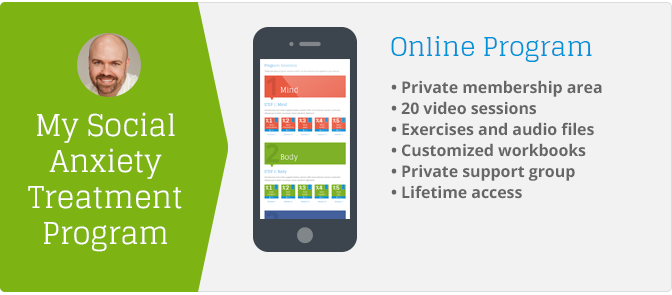Social Media Anxiety: The Good, Bad and the Ugly

Different World, Same Issues
Very little has swept through our world quite as completely in recent centuries as social media.
It’s quite likely you’ve come across this blog via Facebook, Twitter or Google+ and, if you think it’s in any way useful to you and your friends, you might even consider passing this site on in the same manner. Many of those friends you might not have met in person, some may be linked by a shared love of a sports team, some by a mutual regard for a funny photo, others by nothing more community-orientated as living in the same city.
But just because these relationships aren’t defined by face-to-face conversations doesn’t mean they’re not governed by all the same levels of thought processes: when things go well online, you’re happy; when they don’t you can feel anger, anxiety, resentment or sorrow.
Social media has the ability to help those with social anxiety by offering a forum to talk through feelings with others – to remove the loneliness. But it also brings with it a new set of challenges integral to the new way of communicating – and it’s important to acknowledge these issues have their basis in the original definition of social anxiety before seeing how they can be faced in a new online situation.
The Good
First the benefits. This clinical report from the American Academy of Pediatrics shows how prevalent social media is among children and adolescents saying a “large part of this generation’s social and emotional development is occurring while on the Internet and on cell phones. Because of their limited capacity for self-regulation and susceptibility to peer pressure, children and adolescents are at some risk as they navigate and experiment with social media”.
But it also outlines a whole host of benefits for today’s youth – including community engagement, individual and collective creativity, growth of ideas, the inclusion of others from more diverse backgrounds and – most importantly – the “fostering of one’s individual identity and unique social skills”.
The ability to be able to access such a wealth of knowledge and share it with others is undoubtedly a stunning advance when it comes to basic learning and health education – just look at the number of forums devoted to social anxiety where people are sharing their experiences. This clearly is a major step in the right direction when it comes to breaking that anxiety cycle and is a wonderful way for people to start to interact without having to jump straight into physical social situations.
The Bad
We may call the world of social media “cyberspace” but in reality it’s simply us, here, on planet Earth. And so we’re still governed by all the same pressures and potential anxieties as in everyday face-to-face life.
The type of triggers for social anxiety such as bullying, expectations from family or friends, work deadlines and speaking up in a group can still all exist in social media.
For example, this survey of 7000 US mums found 75% felt the pressure they put on themselves to be perfect is worse than the pressure they feel from other mothers and 72% admitted they stressed about being stressed – but most interestingly 42% said that seeing ideal images of family life on Pinterest or Instagram made them even more anxious. This form of anxiety has been referred to as “social media anxiety”.
And although social media can help bridge the gap between isolation and functioning freely in social occasions, it’s important that it isn’t used as an avoidance technique to block out face-to-face interactions.
The Ugly
And then there’s the new stuff…
A couple of decades ago we didn’t obsess about re-Tweeting, or compare how many followers, friends or shares we’d amassed in the day, or take our phones into the shower or leave them on the bedside for fear of missing out on the next important post.
Quite simply, social media has gifted us a great utility but, with it, has come a whole host of side-effects.
Julie Spira – author of The Rules of Netiquette – coined the phrase “social media anxiety disorder” in this Huffington Post article, and, while it’s not a clinical term, it nicely sums up how this new form of communication doesn’t make us immune to social anxiety and can create new issues.
Spira’s own definitions come down to:
- Your cell phone becomes your number one accessory.
- You become anxious if you Tweet someone and they don’t @reply to you within six hours.
- If your cell phone is with you at the dining table and everyone is texting while they’re eating and no one is saying a word.
- If you post a cute photo on Facebook, Twitter, Pinterest, Instagram or other photo-sharing sites with no one liking it or sharing it, however you still keep checking every few minutes or hour.
- If you stare at your Twitter followers and the count goes down and it upsets you.
These may seem flippant, but when you also consider that Facebook Depression has already been described as occurring because social media “may lead us to a less genuine kind of empathy” and that privacy concerns arising from our ever-growing digital footprints can contribute to very real anxiety, it’s important to realise that how we operate online isn’t so different from how we operate in the real world.
Next post: Is Inferiority Complex Linked to Social Anxiety?
Previous post: Managing Social Anxiety At Work


